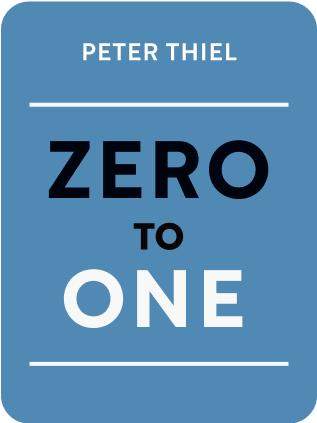

This article is an excerpt from the Shortform summary of "Zero To One" by Peter Thiel. Shortform has the world's best summaries of books you should be reading.
Like this article? Sign up for a free trial here .
What is the best organizational structure for a startup? Who should have equity and how much? Who should make the executive decisions?
Structure impacts performance, so how you organize your business at the start is critical. Peter Thiel asserts that you must make the right decisions in three areas—equity, direction, and operation—to cultivate organizational alignment and growth.
Here’s how to get your startup structure right at the start.
Startup Organizational Structure
Thiel points out that the decisions you make when founding an organization will permanently shape how it operates in the future. You need to make the right decisions up front because, if you make mistakes at the formative stages of your startup, it may not be possible to fix them later. Thiel calls this principle “Thiel’s law,” and says that it applies to organizations of all types, whether businesses or governments.
As an example of how difficult it is for established organizations to change, Thiel points out how seldom the Constitution of the United States has been amended. The organizational structure of the US government is much the same as it was two hundred years ago, and it’s not likely to be changed, whether it still suits our needs well or not. The same is true for your startup organizational structure.
Choosing Partners
Thiel asserts that one thing you need to get right up front is the selection of your co-founders. In fact, he asserts that this is the most important decision you’ll make in founding a startup.
He even equates choosing a co-founder to choosing a marriage partner, claiming that the same issue of personal compatibility applies, and the consequences of incompatibility are just as severe. As an example, he recounts the tragic story of a company founded by Luke Nosek and an unnamed co-founder whose personality and ambitions were incompatible with Nosek’s. Thiel was an investor in the company, but he lost his investment when the company failed due to the founders’ incompatibility.
Corporate Structure
The structure of your startup provides a framework to support and constrain how the people of the company—founders, investors, employees, and so on—interact with each other. As Thiel notes, some people advise against imposing structure on an organization, saying that this will stimulate creativity by giving your team members greater latitude to implement their own innovative ideas. Thiel concedes that, in a perfect world full of perfect people, that would be true. But he argues that, in the real world, real people need some amount of structure in order to work together constructively.
As an example of how a lack of effective structure can contribute to poor performance, Thiel discusses the notoriously poor customer service of certain government agencies.
(Shortform note: On paper, most government agencies have a formal structure, but Thiel equates “structure” with clearly defined roles, and bureaucracy, by definition, is when responsibilities are distributed over such a large organization that no individual holds responsibility for anything. Thus, to Thiel, a bureaucracy’s lack of clearly defined roles implies a lack of effective structure.)
He explains that, to establish a structure that will promote alignment and progress, you must make three decisions:
- Equity: Who will legally own the company? It’s not unusual for founders, investors, and employees all to have a share of ownership in a startup.
- Direction: Who will make the high-level decisions about what the company will do? In many startups, a board of directors consisting of the founders and investors fulfills this function.
- Operation: Who will figure out how to accomplish the company’s high-level objectives and take responsibility for getting the work done? Sometimes a founder assumes this responsibility, sometimes the company hires a CEO to do it, and sometimes this function is distributed among employees.
Minimizing Conflict
Thiel explains that effective structure helps reduce conflict between different people with different interests, but doesn’t necessarily preclude it. In his experience, conflict in startups most often occurs between founders and investors on the board of directors. He advises keeping the size of the board small—preferably just three to five members—to make conflict easier to resolve by simplifying the logistics of communication.

———End of Preview———
Like what you just read? Read the rest of the world's best summary of Peter Thiel's "Zero To One" at Shortform .
Here's what you'll find in our full Zero To One summary :
- Why some companies genuinely move the world forward when most don't
- How to build a company that becomes a monopoly (and why monopolies aren't bad)
- Silicon Valley secrets to selling products and building rockstar teams






